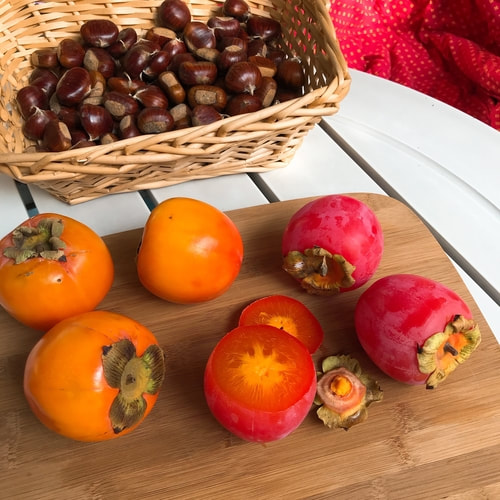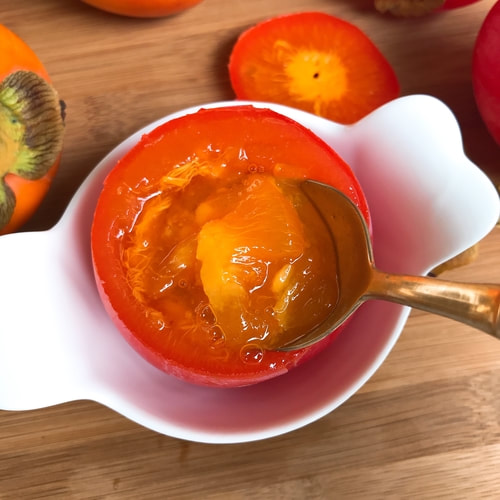|
It’s autumn, and this time of year Persimmons are in season. Yay! The botanical name for his fabulously delicious fruit is Diospyros kaki, which, quite appropriately, is Greek for ‘food of the Gods’. They are also known as Sharon fruit, but personally I prefer the Greek name ;) Whilst there are several varieties of Persimmons, they basically fall into two categories: astringent & non-astringent and it’s very important that you know which one you’re biting into! FuyuThe Fuyu persimmon is non-astringent and can be cut up and eaten like a pear and if it’s not completely ripe it’s still ok to eat. I like them when they are the consistency of a ripe pear. HachiyaMy favourite, the Hachiya persimmon, aka Japanese persimmon is, on the other hand, an astringent persimmon and it has to be completely ripe before eating. If you try to eat an unripe one, it will dry all the moisture out of your mouth and put you off persimmons forever. Imagine eating a mushy, but unripe banana and you’ll get the idea. However, if you taste a ripe one, well, it’s like a sweet, fruity, vanilla-jelly dessert, a true ‘food of the Gods’. The Hachiya persimmon is ripe when it’s as soft as a squashy water balloon, so don’t be put off by the extreme softness. If it ain’t squishy, it ain’t ready! So leave it to ripen longer! (Don’t say I didn’t warn you…) To eat a Hachiya persimmon, just pull off the green/brown top (which will come away easily if the fruit is ripe), slice off the top, sit down, eat the persimmon with a spoon and delight in this amazing culinary delicacy! Once you’ve tasted a really ripe one, you’ll be hooked! :) Nutrition FactsNot only is this fruit a joy to eat, it’s also bursting with nutrition. 1 cup of Japanese persimmon is:
So what are you waiting for? Grab some persimmons today and taste the food of the Gods! :)
0 Comments
Leave a Reply. |
Hello!I'm Nicki Perkins, creator of lovingly plant-based and my passion is helping people adopt a healthful and delicious plant-based lifestyle. Archives
October 2017
Categories |
Copyright 2021 Nicki Perkins | www.lovinglyplantbased.com All rights reserved.
All content, videos and images found on lovinglyplantbased.com may not be reproduced or distributed, unless permitted in writing by Nicki Perkins, lovinglyplantbased.com
All content, videos and images found on lovinglyplantbased.com may not be reproduced or distributed, unless permitted in writing by Nicki Perkins, lovinglyplantbased.com















 RSS Feed
RSS Feed
